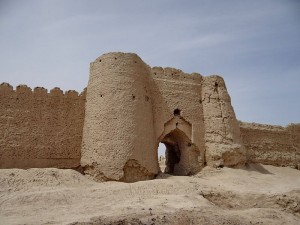 Late last month (June 2014), the UNESCO’s World Heritage Committee added another twenty six new sites to the list of World Heritage Sites bringing the total number to 994.
Late last month (June 2014), the UNESCO’s World Heritage Committee added another twenty six new sites to the list of World Heritage Sites bringing the total number to 994.
One of these sites is Shahr-i Sokhta (Iran), meaning ‘Burnt City’ which is located at the junction of Bronze Age trade routes crossing the Iranian plateau. The remains of the mud brick city represent the emergence of the first complex societies in eastern Iran. Founded around 3200 BC, it was populated during four main periods up to 1800 BC, during which time there developed several distinct areas within the city. These include a monumental area, residential areas, industrial zones and a graveyard. Changes in water courses and climate change led to the eventual abandonment of the city in the early second millennium. The structures, burial grounds and large number of significant artefacts unearthed there, and their well-preserved state due to the dry desert climate, make this site a rich source of information regarding the emergence of complex societies and contacts between them in the third millennium BC.















